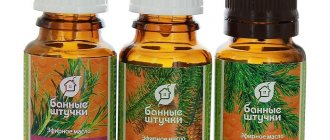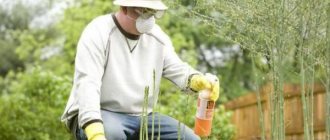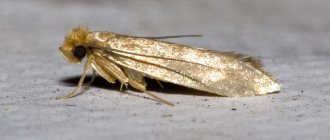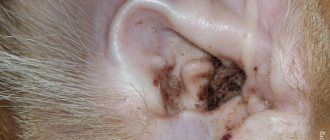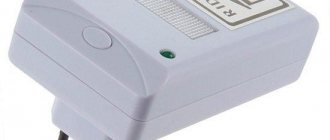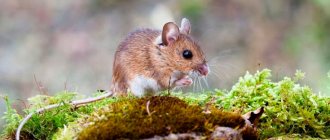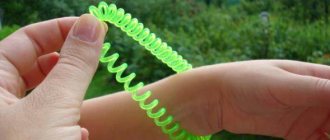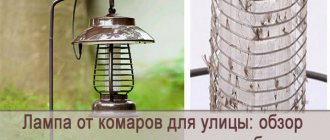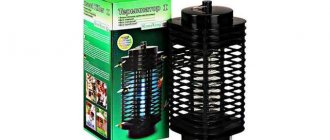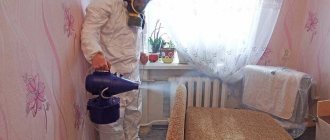Mosquitoes are a real scourge, especially during the warmer months. In some regions, the warm season can last up to six months. All this time, bloodsuckers are active and significantly reduce the quality of life in the territory. For example, in a country house.
To cope with this scourge, there are three options:
Does a mosquito lamp help?
Does a lamp help against mosquitoes?
Review of popular models, rating, operating principle. Is it worth taking?
netkomaram.ru
Open ›
- Leaving the house less and not paying attention to mosquito bites. This is not always possible. Especially if the house is located next to a forest or pond.
- Use professional pest control products. They are very effective, but require proper handling.
- Apply traditional methods. For example, plant geraniums around the site. It is not only simple, but also aesthetically pleasing. True, it is not as effective as in the case of professional products.
Natural and artificial methods can be combined to achieve better results.
Let's try to figure out which drugs perform better, what traditional methods can be used, what their pros and cons are.
Sipaz Super
The insecticide is an emulsion concentrate. The active ingredient is cypermethrin. Sold in two versions: 1.5 liters and 25 liters.
Retains destructive properties for 1.5 months, guaranteeing the disappearance of pests. Paralyzes insects, which entails their death.
The drug kills bees, so you need to be careful and avoid using it near an apiary.
Directions for use: spray over the area. 3 g of insecticide is diluted per liter of water. If the pest infestation is small, 50 ml of solution per 1 m² will be enough. When faced with a large infestation of mosquitoes and midges, it is recommended to use 100 ml per 1 m².
Approximate price: 2,300 rubles.
On the sea
Vacations at the sea are sometimes marred by the appearance of blood-sucking insects that prevent you from enjoying the desired peace and tranquility. You should worry about how to get rid of mosquitoes in advance by choosing the appropriate product.
Aerosol OFF! Extreme
A popular and reliable aerosol that protects against mosquitoes for up to 8 hours when applied to the skin and up to a month when applied to clothing. The active ingredient is DEET. At the same time, it protects against ticks, mosquitoes, fleas, horse flies and other blood-sucking insects.
The aerosol should be used as follows:
- Shake the can vigorously several times.
- Clothing should be processed not indoors, but outdoors from a distance of 20-25 cm, holding things vertically and in the direction of the wind.
- To apply to the skin, the product is first sprayed onto the palm of your hand, and then only distributed, without rubbing, onto open areas of the body.
- The spray does not leave any greasy marks and smells pleasant.
How much does it cost: 150-175 rubles per 100 ml.
Cream ARGUS
Insecticidal cream from a Russian manufacturer that protects against mosquitoes using diethyl-m-toluamide. The product is indispensable for a comfortable holiday near the water and in nature, it has a pleasant consistency and is very easy to apply. Recommended for adults and teenagers.
How to use Argus cream:
- Squeeze the required amount of the drug into the palm of your hand.
- Distribute the product evenly over exposed skin in a thin layer. There is no need to rub it in.
- The insecticidal effect is observed for at least 4-5 hours.
- Continuous protection against mosquitoes can be ensured by repeated application, but not more than 3 times a day.
- Usually insects do not even land on treated areas. But if this happens, then the cream has a negative effect, causing disruption of the nervous system in bloodsuckers.
Price - 35-50 rubles per 42 ml.
Medilis Cyper
This product is a leader on the Russian market of insecticides intended for treating summer cottages. Active ingredient: Cypermethrin.
It affects adult pests and also destroys eggs and larvae.
The effect lasts up to 2.5 months.
The product is available in various packages:
- canister (5 l);
- plastic bottle (50 ml and 100 ml);
- bottle (10 ml);
- ampoule (1 ml).
The price depends on the chosen packaging. So, for a bottle (50 ml) of insecticide you will have to pay about 250 rubles.
To get rid of mosquitoes, add 2.5 ml of product to 1 liter of water. After mixing the insecticide, treat the area with a sprayer.
For 100 m² you will need 1 liter of Medilis Cyper.
Repellents
Most often, it is more advisable to protect not the space where you are relaxing, because it can be a forest where there are quite a lot of mosquitoes, and remedies against them may be ineffective, but yourself. For this purpose, there are substances that can repel not only mosquitoes, but also many other insects. Their name is repellents.
You can use repellents to repel mosquitoes.
Many summer residents can no longer imagine being in nature without repellents - deterrents available in the form of sprays, creams and lotions. Their manufacturers annually improve their products, producing drugs for children, for people with sensitive skin and allergies.
Important! During periods of activity of flying pests, many literally replace their perfumes with repellents, because leaving the house, especially in the evening, without protection means dooming yourself to constant banging and irritation from buzzing nearby.
Repellents are applied to the skin or clothing. For humans they often have no odor, but for insects they have a nasty, repulsive aroma that does not allow them to get closer to their source.
Repellents can be applied to skin or clothing
But if the use of chemical repellents is impossible for some reason, there is always the option of resorting to natural remedies. So, as a natural repellent, you can use indoor lemon, cedar oil or a decoction of wheatgrass roots.
Safety and site treatment rules
To achieve a good result and safe operation, a number of conditions must be observed.
- Check the weather forecast - choose a sunny, windless day without precipitation.
- The use of insecticides is most effective from 05:00 to 07:00 in the morning, or after 21:00, when the sun's rays are less active.
- For protection, wear a respirator, safety glasses, overalls, high boots and rubber gloves.
- After treatment, be sure to take a shower.
- Treat the containers that were used for mixing and spraying the insecticide with an aqueous solution of slaked lime (1:10).
- If a toxic substance gets into your mouth, nose or eyes, rinse the mucous membranes with plenty of water at room temperature.
- Do not spray beds or trees with ripening fruits.
- There should be no animals or people nearby.
Smoke bomb
To create comfortable conditions in your dacha, you can use a smoke bomb. The composition includes an insecticide that is released into the air during combustion.
The favorite remedy of most consumers is the Quiet Evening smoke bomb. It contains Permethrin. Price for 1 checker – 450 rubles.
The checker must be placed on a flat, horizontal surface that is resistant to fire - a metal sheet or brick will do. Light the fuse. It is not recommended for people and animals to stand nearby.
After 4-5 minutes, the burning will end, but the toxic particles will settle on the grass and leaves - the effect will continue for another 2-3 days. Approximate area coverage – 300 m². Pests will not fly into this zone, and at a distance of 3 m from the checker, all insects will die.
Do not use the product near open water, beds and fruit-bearing trees.
After use, the smoke bomb may be disposed of as regular waste.
Traps
Bottle trap
To make it, you will need a regular plastic bottle, a glass of warm water, and sugar.
Cut off the top of the bottle, 5-6 cm from the neck. Pour prepared water into the remaining bottle (it should not be cold or, conversely, hot - only warm, about 30-35 degrees), add sugar (if the bottle is small, then 4-5 tablespoons will be enough), then mix. If desired, you can add yeast; for greater effect, there is no need to mix it with the rest of the solution. Now we cover it all with the cut part of the bottle, turning it upside down.
An excellent option would be to install a trap that will attract most of the insects.
Instructions
Ready! Place a trap near you in a gazebo or garden. The smell from the trap will attract insects, and most of them will fly to study it. In addition to mosquitoes, flies, wasps, ants and other small animals will be interested in such bait.
Velcro
The invention is not new and has already proven itself as an excellent “fighter” against various annoying insects: flies, bees, wasps, small midges, etc. get on the Velcro.
They look like a roll or piece of adhesive tape. The tape is stretched and hung where it is necessary to reduce the number of mosquitoes. The segment is usually placed on a wall, a gazebo support, or a window.
Important! In any case, it is advisable to have a light source nearby.
Velcro is often used, which helps get rid of not only mosquitoes, but also flies and bees
UV lamp
Any light source, especially ultraviolet light, attracts insects. The idea of the trap is that the light will attract mosquitoes, and an additional element (different traps use different methods, but most often it is a specific chemical smell) will kill the insects.
Opinions regarding the effectiveness of the UV trap vary: some note that they have been using it for several years and are delighted with the effect, while others, on the contrary, say with annoyance that installing the lamp did not bring any effect.
Another option for getting rid of pests is a UV trap, but not everyone confirms the effectiveness of this method
Mosquito killer
When purchasing a special installation for killing mosquitoes, you will not have to spend money on insecticides.
With the help of a cylinder installed inside the car, carbon dioxide is released into the air, simulating carbon dioxide coming from a person. It primarily attracts mosquitoes.
When the pest flies closer, it is sucked inside the device, where the mosquito dies. Some shredders are more complex and are capable of emitting both heat and light. This greatly increases the likelihood of catching buzzing bloodsuckers.
The shredder operates from a power outlet or battery. They differ in power and coverage area. Therefore, the price depends on the number of acres. For example, for a shredder for a plot of 10 acres you will need to pay 7,000 - 8,000 rubles.
An important advantage is the absence of unpleasant odor and noise.
One of the best mosquito killers: Mosquito Killer.
Professional approach
The use of these insecticides can be considered a professional approach to treating open areas against mosquitoes . Do not forget that in addition to flying mosquitoes, there are also their larvae and eggs, the destruction of which is also very important. Therefore, experts in the field of pest control use stronger and more effective methods. The most effective thing is processing with a generator , which the appropriate services can do.
This is usually the use of insecticide generators in the form of cold and hot fogs, which allows the mosquito poison to stay in the air longer and have a longer effect on insects. The approximate cost of processing 6 acres is about 1500-2000 rubles.
Mosquito lamps
Based on the principle of operation, lamps are divided into ultraviolet and insecticidal.
An ultraviolet lamp emits bright light with specific wavelength parameters, which is very attractive to mosquitoes. The device is equipped with a plate or grid under current. When insects, attracted by the light, touch the lamp, they are killed by a discharge of current. The device runs on electricity. The range can reach 60-70 m, depending on the model.
The cost also depends on the model, the lower limit is 2000 rubles. The most popular model is the Terminator.
Caution is required: contact will result in a slight electric shock.
An insecticidal lamp contains poisonous substances that kill insects within the range of the device. The lamp body contains gas reservoirs with plates. When heated, the plates release insecticide into the air.
The insecticidal device treats an area at a distance of up to 20 m².
According to consumers, one of the best insecticidal lamps is the ThermaCell Scout Camp Lantern lamp.
Who is threatening us?
In recent decades, the species diversity of winged bloodsucking insects in central Russia has increased significantly. Today the list of hostile creatures includes the following species.
- Squeaky mosquito and other types of mosquitoes. In this insect, only females experience a craving for human blood during the period of egg maturation. They need the protein-rich liquid to bear offspring. One female mosquito can attack a person up to eight times a night. During the day they hide in the cool shade, since they cannot tolerate temperatures above 28 degrees, and at dusk they fly out to hunt. When searching for a person, they focus on the heat emitted by the body and the smell of sweat.
- Midge. If mosquitoes have adapted to living even in megacities, then the midge prefers the banks of rivers and lakes. It is easily distinguished by the small size of its round and rigid body, as well as its wide oval wings. The bite is extremely painful, and the wound does not heal for a long time, because the midge does not pierce the skin with its proboscis, but bites off a small piece of skin and licks off the protruding blood. The consequences of the bite are quite unpleasant: the toxin contained in the saliva causes extensive swelling, and in some people, a severe allergic reaction.
- Midlings. In terms of body structure, these insects are similar to mosquitoes, but their sizes are very small - the body length barely reaches 2.5 mm. This allows midges to land on the mosquito net and crawl through the mesh to get into the room. Bites can cause symptoms of general toxicosis: a person’s temperature rises, weakness and nausea appear.
- Mosquitoes. Fortunately, these bloodsuckers are thermophilic and are rarely found north of the Krasnodar Territory. Small insects, the length of which does not exceed 3 mm, are carriers of a number of infectious diseases. At the site of the bite, a person develops severe itching, and dermatitis often develops.
The reproduction cycle of all of these species is associated with water in which the larvae develop. Therefore, in areas remote from bodies of water, the danger of being bitten is significantly less high than on the banks of rivers, lakes and ponds.
Folk remedies
Some plants help ward off mosquitoes in your area.
- Garlic beds, like young tomato bushes, are avoided by mosquitoes, as they cannot stand the smell of these crops.
- The aroma of marigolds is also unpleasant to mosquitoes. By planting them near the house and gazebo, it will be possible to reduce the number of pests around recreation areas.
- Melissa. The mint smell is disgusting and repels bloodsuckers. It is recommended to plant bushes throughout the area.
- Lemon or cinnamon basil with its aroma will also force insects to move away from the area.
Each owner of gardens and vegetable gardens chooses which product to prefer independently, taking into account personal preferences, ease of use and, of course, their budget.
Varieties
Entomologists count more than 3,000 species of mosquitoes and classify them into several large groups:
- Common (squeaker) . The most common type. An adult specimen measures 3-8 mm. Bloodsuckers include female squeakers - they require blood components to breed offspring. And males feed on plant juices. Squeakers are carriers of serious diseases such as eczema and meningitis.
- Centipede (karamora) . They live in areas of high humidity, near water bodies and swamps. Individuals are large in size - about 4-8 cm in length. Karamors are safe for humans, but they cause great harm to garden plants. Centipede larvae actively eat tender plant roots and destroy young seedlings.
. Carriers of dangerous malarial plasmodia - the causative agents of malaria. In appearance, Anopheles is similar to ordinary mosquitoes, the difference being the increased size of the hind legs. They live in areas located near water bodies.
Malarials (Anopheles)- Two-lined biter . A small insect, common in almost all climatic zones. The main difference is the bright white stripes on the limbs and body. Individuals are carriers of deadly infections.
- Winter (chionei) . They are slightly similar to long-legged mosquitoes and have a length of 10-12 mm. They can be encountered all year round, even during the cold winter months. Their habitats are damp caves, half-rotten trees, rotten stumps, etc.
- Bolotnitsa (meadow) . These insects are not “bloodsuckers”; they feed only on plant juices and nectar. Meadowworts live in mossy forests, water meadows, and swampy areas.
- Dergun (bell) . Insects that are harmless to humans live only 3-5 days in reed thickets near ponds and shallow rivers and swamps. They are distinguished by their greenish-yellow color and elongated limbs. The main food is plant components.
Mosquitoes are the oldest inhabitants of our planet.
They live on it for more than 150 million years. The growth of the population of parasitic insects is facilitated by the abundance of places attractive for reproduction. Mosquitoes actively breed in stagnant, sun-warmed water, rich in organic matter. Any small garden pond, irrigation barrel, or even a rusty tin can with rainwater becomes an excellent place for the parasite to accumulate.
